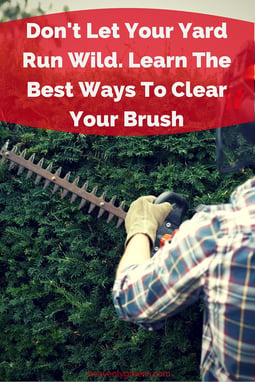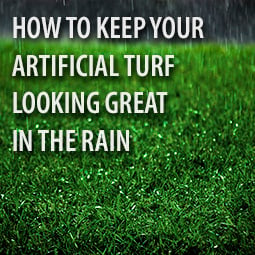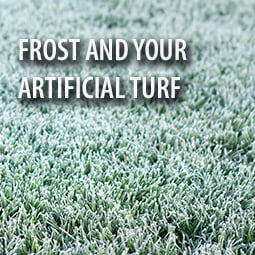 Maintaining control of brush and weeds that surround your yard can be a huge task if your lawn is larger than most or is next to an area that rarely gets any type of lawn care or attention. The key to controlling the growth of brush and weeds is to remove what you can and create a boundary of some kind that will prevent it from re-entering your lawn.
Maintaining control of brush and weeds that surround your yard can be a huge task if your lawn is larger than most or is next to an area that rarely gets any type of lawn care or attention. The key to controlling the growth of brush and weeds is to remove what you can and create a boundary of some kind that will prevent it from re-entering your lawn.
Remove Any Loose Debris
Carefully walk your lawn and look for any loose debris that is laying next to fences or buildings. Use a trash bag for paper and inorganic items that can go in the trash. Sticks, rocks, branches or leaves can be taken away in a wheelbarrow and either burnt or bagged for pick up. Lawn clippings and other natural items can be taken to the local compost facility if they have not been sprayed with any type of chemical fertilizer, herbicide or pesticide.
Trim Down Any Weeds or Brush
Once you have a clear view of your lawn, trim away any weeds or brush that you do not want. If you have old bushes or plants that need to be replaced, tear them out as well. Make sure that when you are cutting down large bushes to leave enough of the trunk or base to be able to attach a chain or rope to when it comes to digging up and removing the roots. If you live next to a wooded area or large meadow, you may want to extend your clearing efforts a few feet farther than your property line. This will reduce the risk of the weeds returning to your lawn.
Clear the Area And Make Necessary Repairs
When everything has been cut down you can begin the second stage of the cleaning process. Remove as much of the debris as possible to prevent any seeds from dropping to the soil. Depending on what type of year you are planning on clearing your brush, seeds may not be something you have to worry about. After all of the debris is cleared away, you will want to thoroughly inspect your entire fence as well as any section of the building that was covered by the weeds and brush. By making any necessary repairs now, it will prevent you from damaging your new landscaping later.
Dig Out Any Remaining Stumps or Roots
With all of the clutter of the weeds and brush gone, you can get a closer look at the trunks and roots that were left behind. Bushes can have extremely large root areas. You will need to loosen the ground around the trunks to be able to pull them out. Many people use stump removing chemicals to kill what is left of the bush. This is a personal choice. By removing the top and pulling out the majority of the root system, the plant will be sufficiently eliminated and there will be minimal risk of it returning. A load of fill dirt may have to be brought in to fill in any holes left behind.
Landscape the Area to Prevent New Growth
When the land has been sufficiently cleared of all debris and properly prepared, landscaping can begin. By landscaping the area, you eliminate much of the risk of regrowth. Landscaping cloth and gravel or wood chips will prevent weeds and various types of brush from being able to establish themselves. While seeds may blow into your yard from outlying areas, it will be extremely difficult for them to grow and thrive in the new environment. Flowered plants and decorative bushes can also be added to help create a nicer, more visually appealing look.












